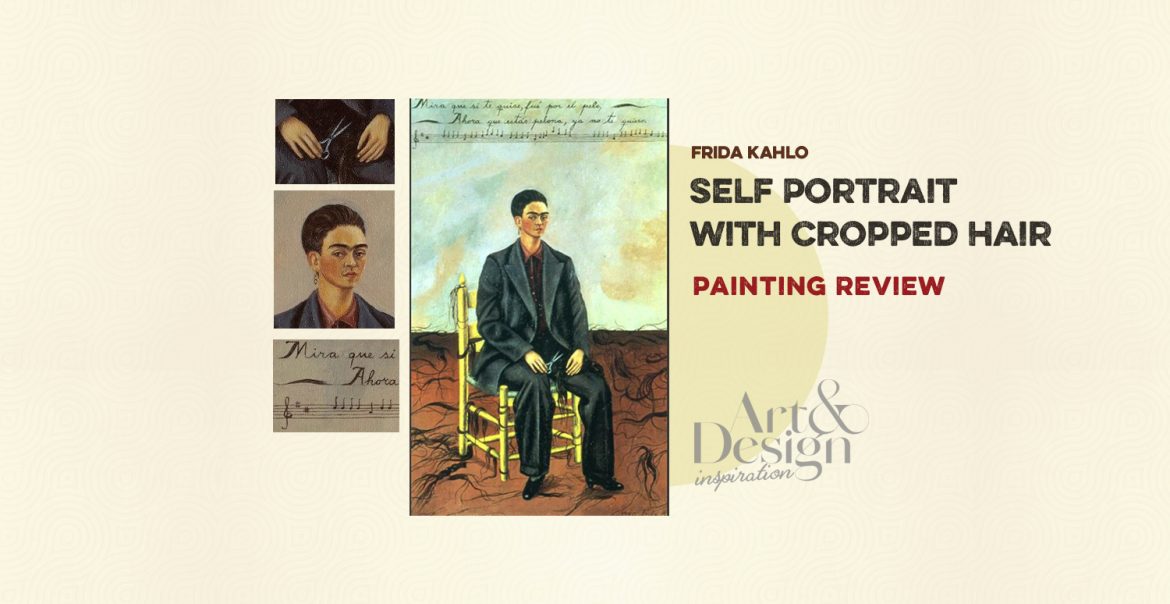In 1940 Self Portrait with Cropped Hair was Frida’s first self-portrait after divorce from fellow artist Diego Rivera. Here, she depicted herself wearing an oversized men’s suit and crimson shirt—possibly Rivera’s—instead of one of the traditional Mexican Tehuana dresses that she is often shown wearing.
She has just cut off her long hair that Diego loved. In her left hand she holds a lock of her clipped hair like an sign of her sacrifice. In her right hand, she holds the scissors with which she martyred her femininity. Strands of her hair are everywhere and they surround her in the empty space that she seems to shrinks into.
In contrast to her typical self-portraits, she would fill up the canvas with boldness, colorful expressions, elaborateness. Here she purposely minimizes herself in this portrait of gravity and sadness.
The verse of a song painted across the top of the portrait points to the reason behind this act of self-mutilation:
“See, if I loved you, it was for your hair, now you’re bald, I don’t love you any more.”

After the divorce, Frida gave up her Tehuana costumes so liked by Diego and wore instead a man’s suit. The only feminine attribute she retained was her earrings. This self-portrait seems to express her desire for the freedom and independence of a man and yet at the same time expresses the sadness and loss. The marriage lasted just five short years; the two separated in 1934 and divorced in 1938, although they would remarry just two years later.
Diego was married three times other than to Frida, although he did say, “If I ever loved a woman, the more I loved her, the more I wanted to hurt her. Frida was only the most obvious victim of this disgusting trait.” A doctor once diagnosed Diego as being “unfit” for monogamy, however upon her death in 1954 Diego wrote, “I realized that the most wonderful part of my life had been my love for Frida.”
In spite of all the pain Frida experience with Diego, in typical Frida style she is still controlled. The yellow chair, the only bright spot in the painting, seats the upright Frida in a partial man stance. Legs firmly planted, and body at a slight angle she is not facing the viewer but looks sideways. Her face proportionally smaller than her body seems to state an uncertainty that minimizes her femininity, yet, she has accepted her new look and mourns for what was lost.






